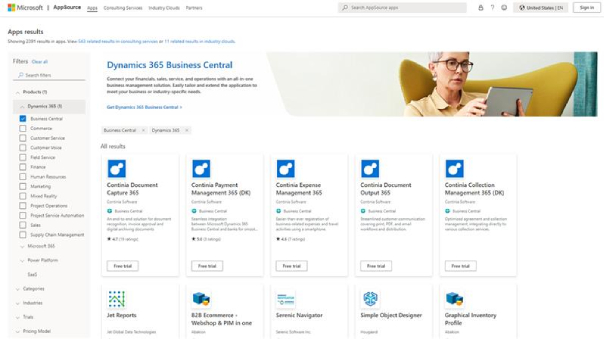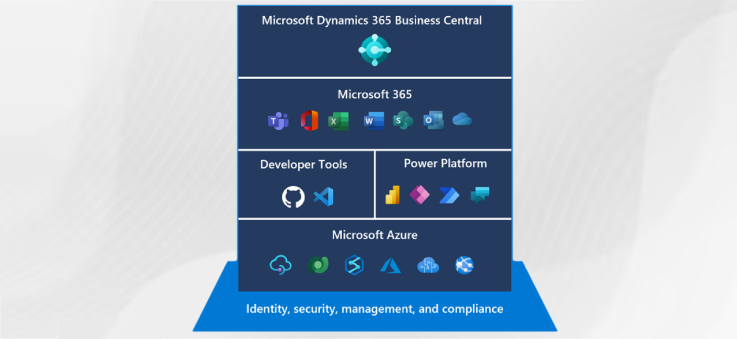Effective procurement is essential for businesses striving to maintain cost efficiency, improve vendor relationships, and optimize operations. NetSuite Procurement by STREAMS Solutions stands out as a robust solution tailored to modern businesses, enabling them to streamline vendor management, optimize source-to-pay processes, and achieve strategic spend management. By integrating these capabilities into a single cloud-based platform, NetSuite Procurement empowers organizations to enhance their operational efficiency and maintain a competitive edge.
Streamlining Vendor Relationships with NetSuite Procurement
Vendor management is a cornerstone of effective procurement, and NetSuite simplifies this process by providing tools that foster strong and collaborative relationships. At its core, the solution offers a centralized vendor management system, allowing businesses to maintain comprehensive profiles for all suppliers. From contact information to transaction histories and performance metrics, everything is readily accessible in one place.
NetSuite’s vendor self-service portal further enhances communication and collaboration. Suppliers can directly access purchase orders, submit invoices, and track payment statuses, reducing administrative overhead and minimizing delays. This transparency fosters trust and ensures that vendors remain engaged and responsive. Moreover, the portal supports real-time updates, so vendors and procurement teams can quickly resolve discrepancies or address urgent requirements.
By offering a unified view of vendor performance, including delivery timelines, quality assessments, and compliance metrics, NetSuite enables businesses to identify reliable suppliers and address underperforming ones. This insight ensures long-term partnerships with high-performing vendors while mitigating risks associated with inconsistent suppliers.
Optimizing Source-to-Pay Processes
The source-to-pay (S2P) cycle encompasses all stages of procurement, from identifying needs and sourcing suppliers to making payments. NetSuite Procurement transforms this traditionally fragmented process into a seamless, integrated workflow that saves time and reduces errors.
NetSuite’s automation capabilities play a key role in streamlining S2P. The system automates tasks such as purchase requisitions, purchase order (PO) generation, and approvals. Employees can create requisitions within the platform, which are routed for approvals based on predefined workflows. This eliminates manual paperwork and accelerates procurement cycles.
The platform’s sourcing tools allow procurement teams to identify and evaluate potential suppliers effectively. Businesses can initiate requests for proposals (RFPs) and compare supplier bids, ensuring the selection of the most competitive and reliable vendors. This functionality is particularly valuable in reducing procurement costs and maintaining high standards of quality.
Once suppliers are selected, NetSuite generates purchase orders directly from approved requisitions, ensuring data consistency and reducing duplication errors. The platform also enables electronic communication with suppliers, eliminating the need for paper-based correspondence and enabling real-time updates on order statuses.
On the payment side, NetSuite integrates with accounts payable (AP) systems to streamline invoice matching, approvals, and disbursements. The system automatically matches invoices with corresponding purchase orders and goods receipts, flagging discrepancies for review. This automation minimizes the risk of overpayments, duplicate payments, or missed deadlines, ensuring financial accuracy and compliance.
Effective Spend Management with Advanced Analytics
NetSuite Procurement equips organizations with advanced spend management tools to monitor, analyze, and control expenditures. By providing real-time visibility into spending patterns across departments, regions, or categories, the platform empowers businesses to make data-driven decisions.
One of the standout features of NetSuite’s spend management is its ability to enforce procurement policies. Organizations can define spending limits, preferred suppliers, and approval hierarchies within the system. This ensures compliance with internal policies and reduces the risk of unauthorized spending.
The platform’s analytics capabilities provide in-depth insights into spending trends. Businesses can generate reports that highlight spending by vendor, category, or project, enabling them to identify cost-saving opportunities and negotiate better terms with suppliers. Additionally, these insights support strategic planning, allowing organizations to forecast future procurement needs and align budgets accordingly.
Spend categorization is another critical feature that contributes to effective management. NetSuite categorizes expenditures into predefined or custom categories, enabling procurement teams to track specific cost areas more precisely. This granularity ensures that businesses can identify inefficiencies or bottlenecks in their procurement processes and take corrective action.
Real-Time Collaboration Across Departments
Procurement is rarely an isolated function; it involves collaboration with multiple departments, including finance, operations, and inventory management. NetSuite’s integrated platform fosters cross-departmental collaboration by ensuring that all stakeholders have access to real-time procurement data.
For instance, inventory managers can monitor stock levels and generate purchase requisitions when inventory falls below predefined thresholds. These requisitions are seamlessly integrated into the procurement workflow, reducing the risk of stockouts or overstocking. Similarly, finance teams can access procurement data to ensure alignment with budgetary constraints and financial forecasts.
NetSuite’s cloud-based architecture further enhances collaboration by enabling remote access to procurement data. Whether teams are working from different locations or time zones, they can stay connected and make informed decisions without delays. This accessibility ensures business continuity and agility in a rapidly changing market environment.
Enhancing Compliance and Risk Mitigation
Compliance with regulatory requirements and internal policies is critical in procurement. Non-compliance can lead to financial penalties, reputational damage, or operational disruptions. NetSuite Procurement addresses these challenges by embedding compliance into every stage of the procurement process.
The platform allows businesses to enforce supplier compliance by integrating regulatory requirements into vendor evaluation criteria. Suppliers must meet predefined standards, such as certifications or adherence to ethical sourcing practices, to qualify for business partnerships.
NetSuite also facilitates audit trails for all procurement activities. Every action, from requisition approvals to payment disbursements, is logged within the system, ensuring full traceability. These records are invaluable during audits or compliance reviews, providing evidence of adherence to policies and regulations.
Risk management is another area where NetSuite excels. The platform provides tools to assess and monitor risks associated with suppliers, such as financial instability, geopolitical factors, or quality issues. By identifying potential risks early, businesses can take proactive measures to mitigate their impact.
Scalable Solutions for Growing Businesses
One of the key advantages of NetSuite Procurement is its scalability. As businesses grow and their procurement needs evolve, the platform can adapt to accommodate increased complexity and volume. NetSuite supports multi-location and multi-currency operations, making it an ideal choice for businesses with global procurement requirements.
Additionally, the platform integrates seamlessly with other NetSuite modules, such as inventory management, financials, and customer relationship management (CRM). This integration ensures that procurement processes are aligned with broader business operations, creating a unified and efficient ecosystem.
NetSuite’s scalability also extends to customizations. Businesses can tailor the platform to meet their unique requirements, such as creating custom workflows, reports, or dashboards. This flexibility ensures that NetSuite remains a valuable asset as organizations continue to expand.
The Future of Procurement with NetSuite
As businesses navigate a landscape marked by economic uncertainties, supply chain disruptions, and increasing competition, the role of procurement has never been more critical. NetSuite Procurement provides a foundation for businesses to not only overcome these challenges but also turn procurement into a strategic advantage.
The platform’s focus on automation, real-time insights, and seamless collaboration ensures that businesses can operate with agility and efficiency. By optimizing vendor relationships, streamlining S2P processes, and managing spend effectively, NetSuite empowers organizations to drive profitability and maintain long-term sustainability.
Conclusion
In the future, procurement solutions like NetSuite are likely to incorporate advanced technologies such as artificial intelligence (AI) and machine learning (ML) to further enhance decision-making and predictive capabilities. For businesses seeking to stay ahead of the curve, adopting NetSuite Procurement by STREAMS Solutions is an investment in a more efficient, resilient, and competitive future. By transforming procurement into a streamlined, data-driven process, NetSuite ensures that businesses can focus on their core objectives while maintaining control over costs and vendor relationships. With its comprehensive suite of features, NetSuite Procurement remains a vital tool for businesses striving to achieve operational excellence and strategic growth.





